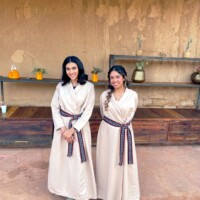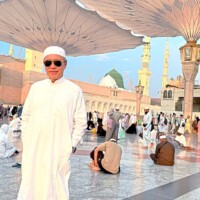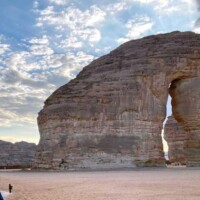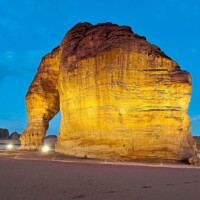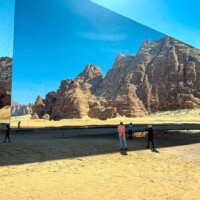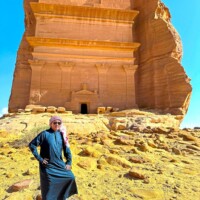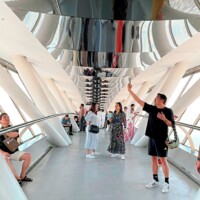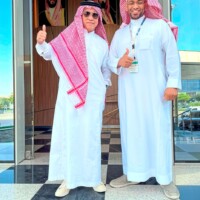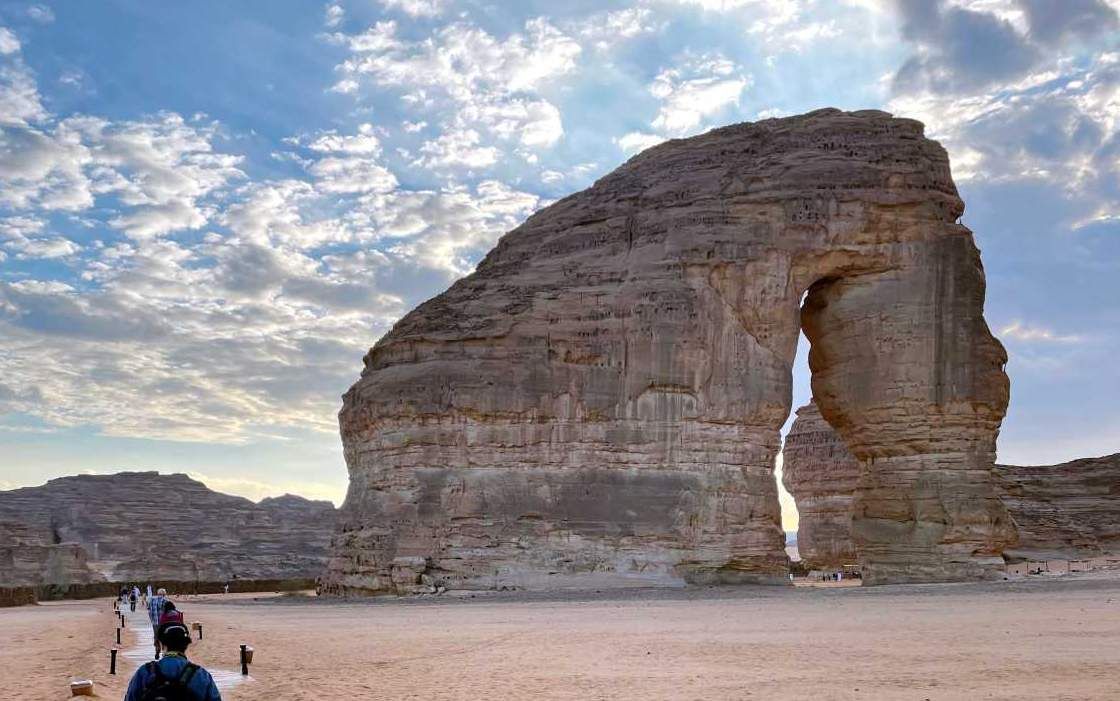
The Elephant’s Rock in Al-ula, Saudi Arabia. — Photos: FLORENCE TEH
I would never have imagined a non-Muslim like me getting to visit Medina, the second holiest city for Muslims in Saudi Arabia after Mecca.
But just weeks ago, I stood before the Prophet’s Mosque, the Al-Masjid an Nabawi, and basked in its splendour.
Previously, non-Muslims weren’t allowed into the city, but that rule was lifted two years ago.
I was in front of the mosque decked in a white jubah (robe) and matching white skullcap to soak in the full ambience, and privilege, even though I was prohibited from entering, being non-Muslim.
It was delightfully peaceful and tranquil as I watched many of the faithful make their way into the mosque for prayers, and for others, just to be around the holy site.
The women in my tour group of Malaysian tourists, all non-Muslims, were appropriately attired to respect the dress code applied at the mosque compound.
Almost all of us seasoned travellers snatched the opportunity to sign up for the eight-day tour of Riyadh, Al-Ula, Medina and Jeddah because the Kingdom of Saudi Arabia was one of the few nations we had never been to.
Saudi Arabia finally decided to open its doors to the world in 2019, but two years of Covid-19 put that plan on hiatus. With the world slowly staggering out of the post-pandemic chaos, the nation is now promoting tourism in an aggressive way.
Much gratitude should go to the powerful Crown Prince Mohammed bin Salman Al Saud, more famously known by his initials MBS, for his role.
He has allowed women to drive – they were banned from doing so until 2018 – and placed them in top positions in the Cabinet, government and even the police, which many older local men are still struggling to accept.
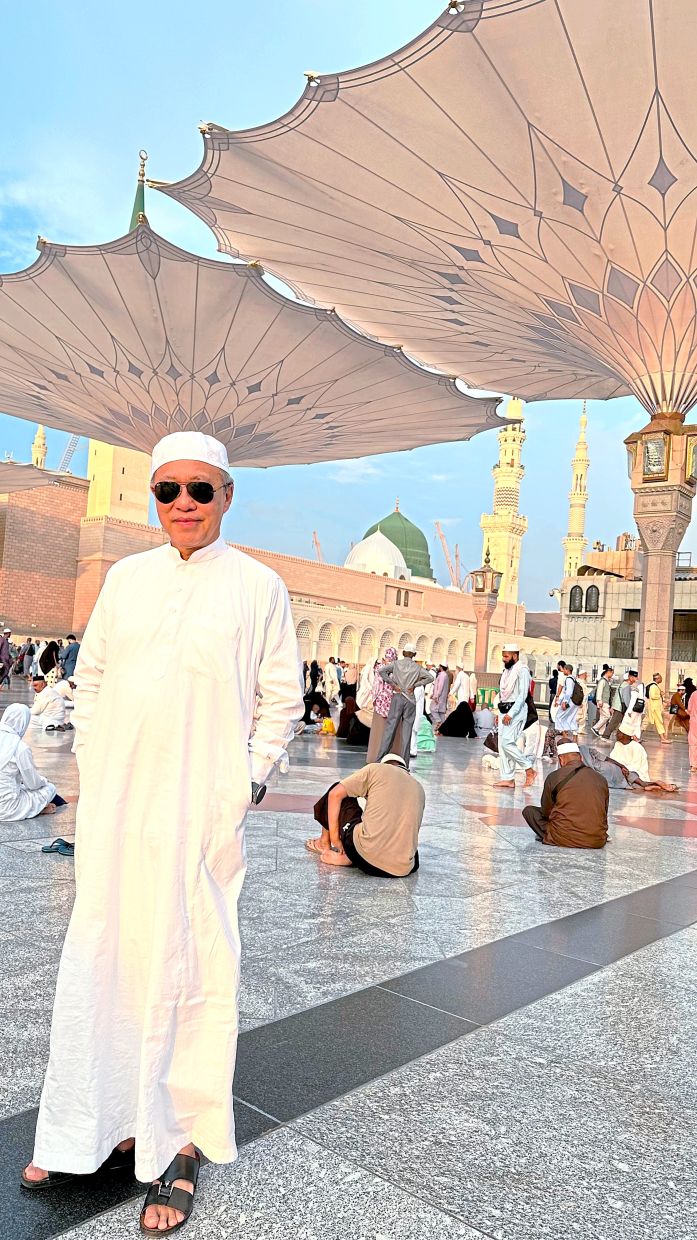
The writer outside the Prophet’s Mosque in Medina. Medina was previously closed to non-Muslims.
Concerts have been welcomed with top acts like BTS, Mariah Carey, Janet Jackson, Blackpink and David Guetta all performing in Jeddah and Riyadh, something previously unimaginable in this once ultra-conservative country. But this new global perspective offers encouraging signs.
All the Malaysian female tourists had one question in mind before signing up for the tour – were they required to cover their head with a shawl, like in Iran?
The answer was a simple “no”, except in Medina, because it’s the second holiest city in Saudi Arabia. Yet, that rule wasn’t even applied in a public space like our hotel’s restaurant.
In other cities like Riyadh, Jeddah and Al-Ula, non-Muslims, and even local Saudi women, aren’t restricted in any way.
Unlike in Iran, there’s no moral police to patrol the streets to make sure women cover their heads.
In malls, Malaysians were surprised to see younger Saudis without the hijab or men walking around in shorts, although many women were still wearing the burqa.
The Red Sea Mall in the northern suburb of Jeddah is one of the largest shopping centres, where one can observe how modern Saudis go about their lives. There’s no need for a male chaperone or family member to accompany a woman on an outing.
Saudi Arabia is indeed at a crossroad as MBS is determined to change the face of his country at a swift pace. It was recently announced that Saudi Arabia will host the World Expo in 2030; it has also won the rights to host the FIFA World Cup in 2034.
MBS’s Vision 2030 is a vast economic transformation plan in which he has poured into hundreds of billions of dollars, hoping to open the kingdom to commerce and tourism amid rising regional competition.
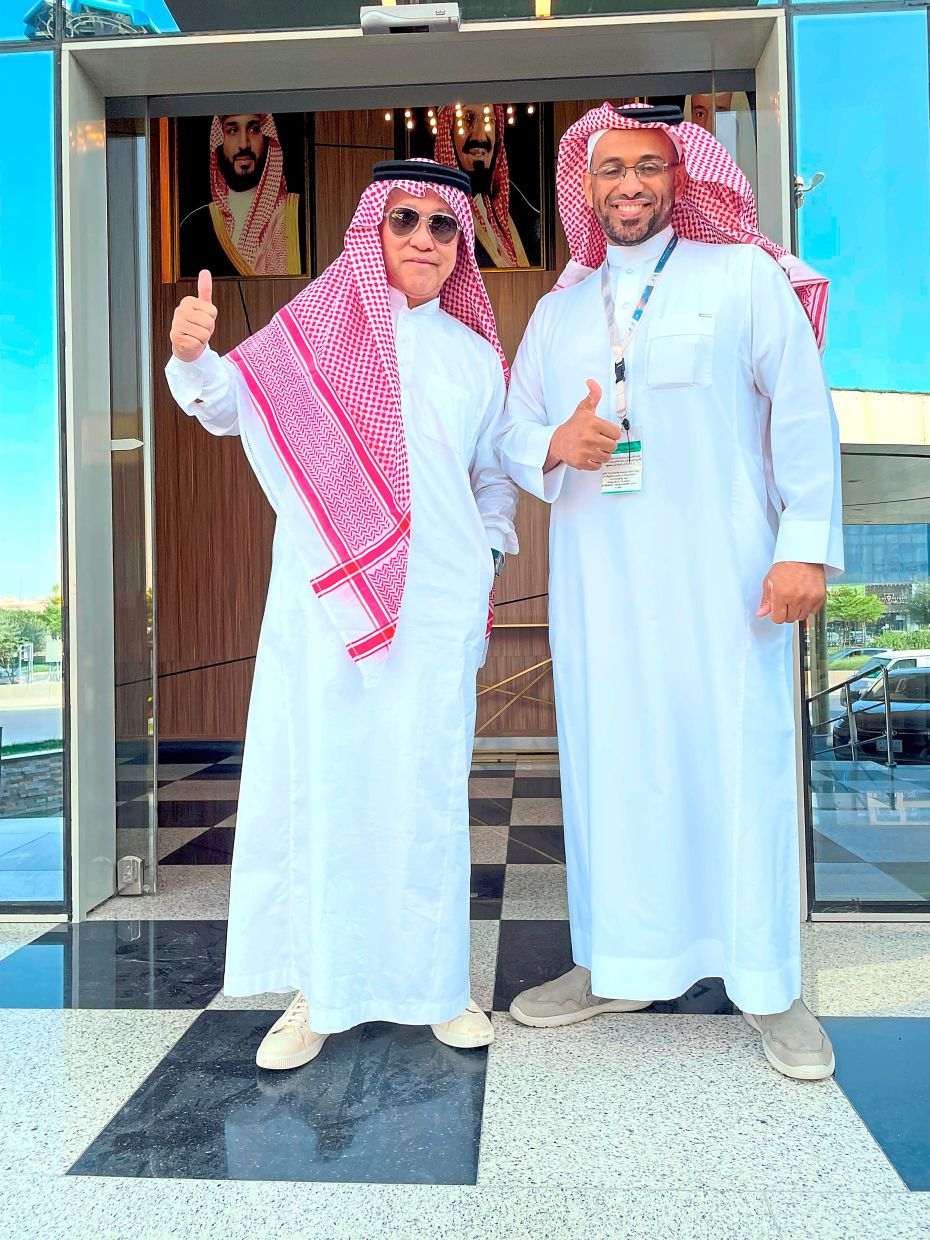
The writer with his guide, Abdulaziz Alhodeib, in Riyadh, all dressed up in white robes and Arabic head covers.
He knows there’s a finite lifespan for fossil fuel – his kingdom’s source of wealth – and is aware that it will eventually be replaced by environmentally friendly options as the rest of the world switches to electric.
MBS understands his country must reduce its reliance on oil if it aspires to keep its place on the world stage.
The centrepiece of Vision 2030 is Neom, which includes a US$1tril (RM4.7tril) megacity known as The Line, which will be 33 times bigger than New York City.
Amazingly, it will even have 36km of ski slopes with man-made snow where visitors can ski all year around, as well as a 3km-long artificial lake.
Saudi Arabia has now donned a friendly face as it begins to welcome the world to its country, which was once only the domain of Muslim pilgrims.
While Medina has stricter rules for non-Muslims, I was still invited into the sanctuary of the oldest mosque in Al-Balad, a former walled city of traditional houses with wooden balconies, mosques and bazaars in narrow alleys.
It was already maghrib (sunset) when I walked near the Shafei mosque. I peeked inside because I desperately wanted to enter and watch the prayers up close.
The guide and mosque officials, noticing my curiosity and interest, held my hands and ushered me in, assuring me that it was acceptable for non- Muslims to enter and watch the prayers.
I was indeed pleased by the gesture and assurances extended to me, and a few of my fellow travellers also followed suit as the guides sportingly took photographs of us.
The kingdom is bent on changing the world’s perception of Saudi Arabia in a well-financed strategy to remix, reimagine and re-invigorate the country beyond the images of desert, oil sheikhs and holy cities.
It’s now giving Jordan a run for its tourism money with its heavy promotion of Al-Ula, the ancient city.
The world is familiar with Petra, the half-built, half-carved archaeological site in Jordan, which was made famous in Indiana Jones And The Temple Of Doom.
But the same Nabataean Arabs, who were known for perfectly carving cities from mountains, also made their way to Saudi Arabia.
Saudi Arabia finally opened Al-Ula in 2021 after having it closed for 40 years. The town was a settlement for pilgrims travelling from Damascus to Mecca.
The attraction is at the Hegra site, with over 110 astonishingly well-preserved tombs set in stunning desert landscapes.
Many of these tombs were dedicated to healers, military figures and leaders.
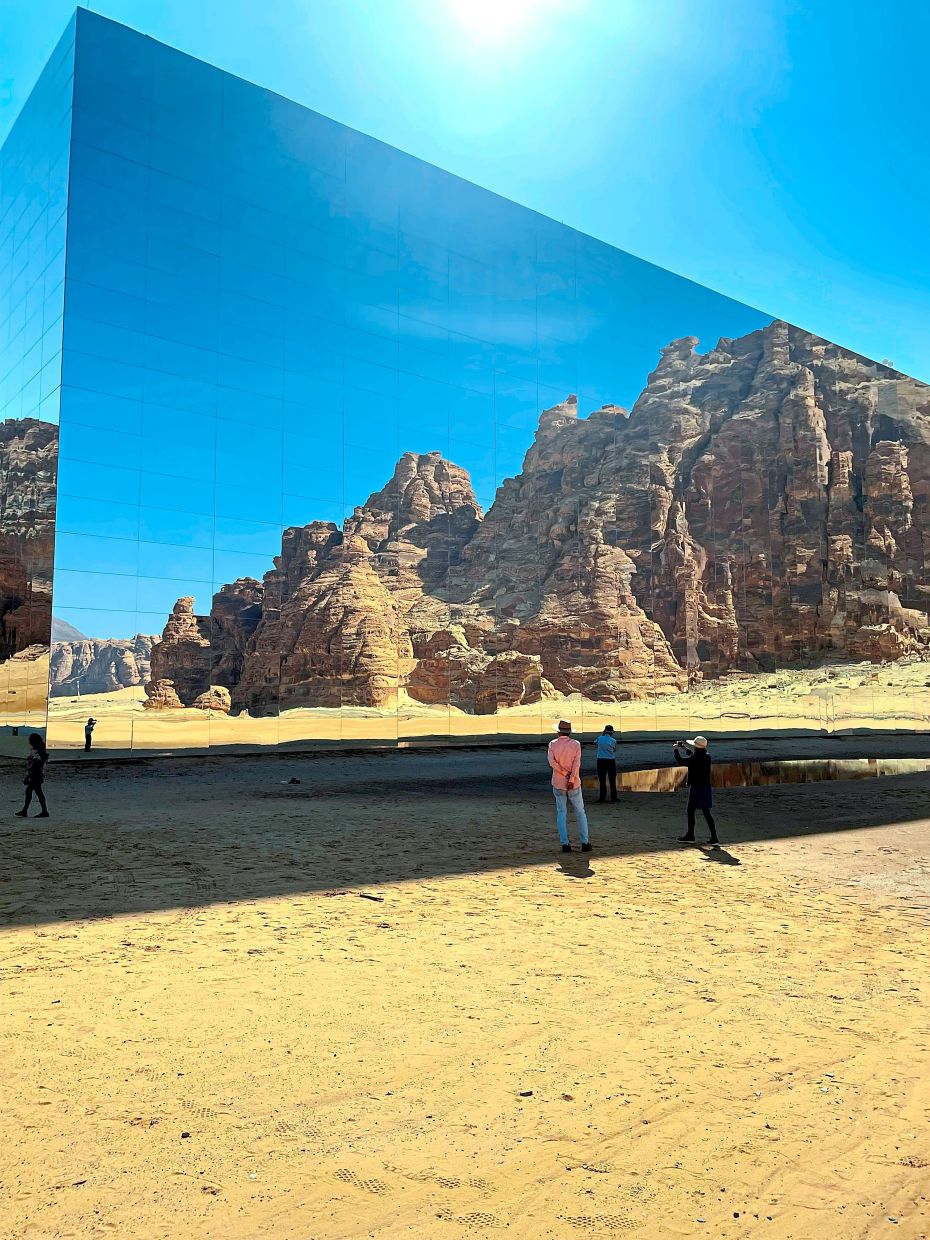
The world’s largest mirrored building in Al-Ula is a stunning building of art located right in the middle of the desert.
But the highlight of the visit for many is to see Hegra’s largest tomb, measuring about 22m tall, the monolithic Tomb of Lihyan Son of Kuza, called Qasr al-Farid.
It’s often referred to as the “Lonely Castle” because of its distant position in the area, but it’s surely the most magnificent tomb.
Then, there’s the dramatic Elephant Rock, the most iconic geological marvel, which is an instantly recognisable form with its distinctive trunk and body. Its shape is the result of wind and water erosion over the course of millions of years.
For me, Al-Ula was the highlight of the entire trip. Strangely, at one time, many local Saudis stayed away from Al-Ula, believing it was a cursed place, but its fate changed when MBS made it a flagship project of Vision 2030.
An international airport is already serving many foreign tourists, but better hotels are desperately needed to meet the requirements and standards of foreigners in Al-Ula.
Tourists should not expect Saudi Arabia to be another Dubai as there are harsh laws against the sale and use of alcohol but non-alcoholic beers, both local and imported, are sold in supermarkets.
Saudi Arabia changed my perception of the country and its people. They were warm, friendly and accommodating.
It’s a custodian of Islam and continues to protect the sanctity of the holy sites, yet at the same time, is also evolving.
We’re indeed living in exciting times, and I certainly hope MBS will continue with his vision and plans. With so little time and so much to see, there’s one forgone conclusion – Saudi Arabia will see me again.
*The nine-day Saudi Arabia trip was organised by Apple Vacations with a direct flight from Kuala Lumpur to Riyadh.


